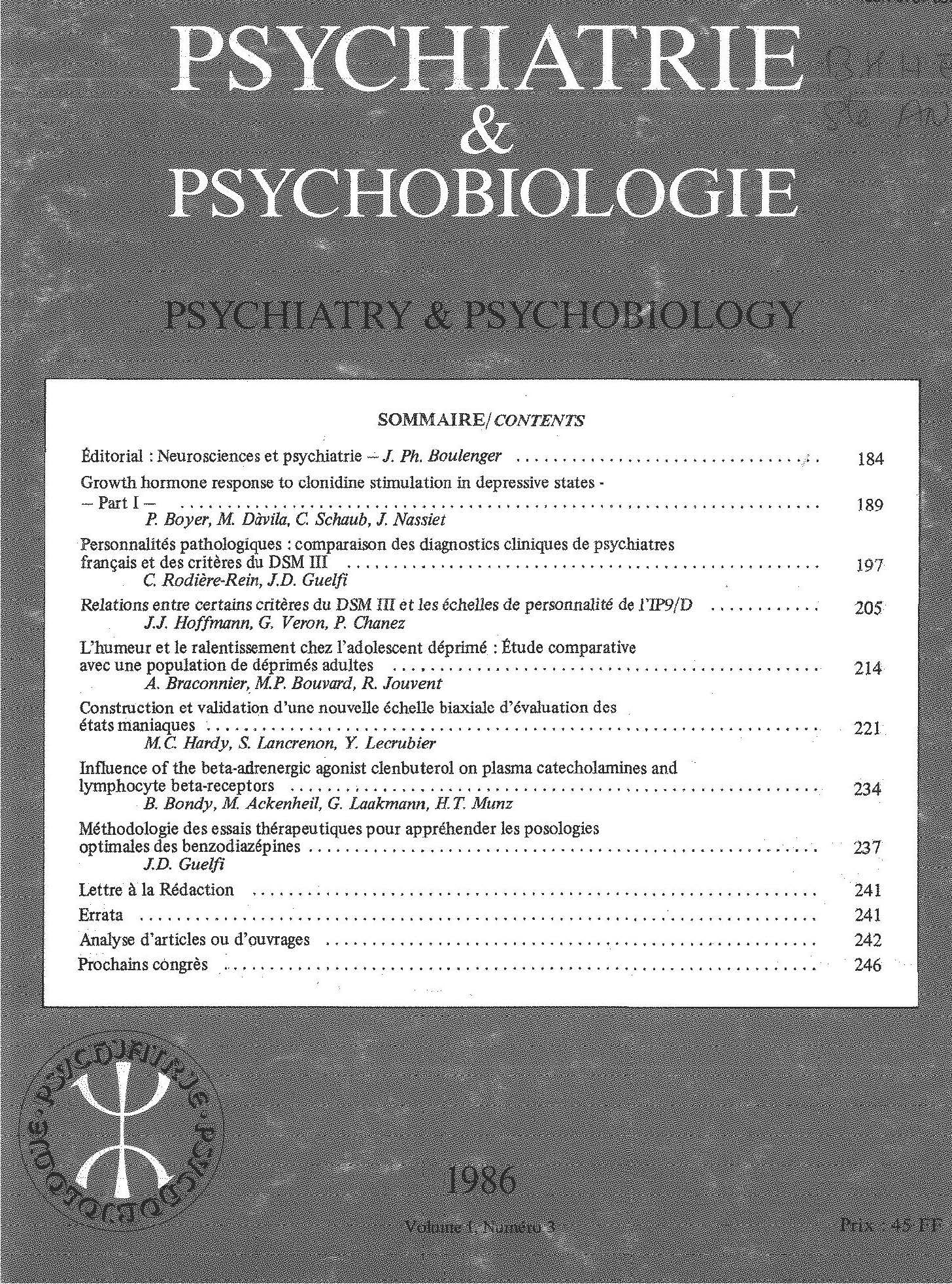Article contents
Anxiety and depressive disorders in a French population: methodology and preliminary results
Published online by Cambridge University Press: 28 April 2020
Summary
Preliminary results of an epidemiological study in the general population of a small town near Paris are presented. This study investigates the prevalence of depressive and anxiety states and the risk factors associated with these disorders. The study methodology is reported in detail, especially the instruments chosen (some sections of the DIS/CIDI, questionnaires on social support, life events and self-rating questionnaires). Anxiety and depressive disorders are frequent in this population: life-time prevalence of Panic Disorder in men amounted to 2.3% and in women 3.1%, Generalised Anxiety Disorder in men 5.4% and in women 13.4%, Major Depressive Episode in men 8.5% and in women 21.9%. Panic Disorder is assessed with regard to different definitions and criteria (DSM III, DSM III-R). A wide difference in results is found according to the criteria used. Specifically, when anticipatory anxiety is taken into account, this increases the frequency rate of Panic Disorder. A significant comorbidity is found between anxiety and depressive disorders.
Résumé
Les auteurs rapportent les resultats préliminaires d'une enquête realisée en population générale dans une petite ville de la région parisienne. Ce travail a pour objet l'étude de la prévalence et des facteurs de risque des états anxieux et dépressifs. Les données relatives aux 749 premiers sujets enquêtés sont analysées brièvement. La méthodologie de l'enquête est rapportée et en particulier les instruments d'évaluation retenus (sections du DIS/CIDI, questionnaires sur le soutien et le réseau social, échelles d'auto-évaluation). Les troubles anxieux et dépressifs sont fréquents dans cette population (prévalence vie entière: trouble panique hommes 2,3%, femmes 3,1%; anxiété généralisée hommes 5,4%, femmes 13,4%; épisode dépressif majeur hommes 8,5%, femmes 21,9%). Au plan méthodologique, différents niveaux de définition des troubles paniques sont évalués qui soulignent les différences entre les critères du DSM III et ceux du DSM III-R et en particulier l'augmentation de fréquence de ces troubles si l'on prend en compte l'existence d'une anxiété anticipatoire. Il existe de plus une importante comorbidité des troubles anxieux et dépressifs.
Keywords
- Type
- Original article
- Information
- Copyright
- Copyright © European Psychiatric Association 1989
References
- 28
- Cited by



Comments
No Comments have been published for this article.